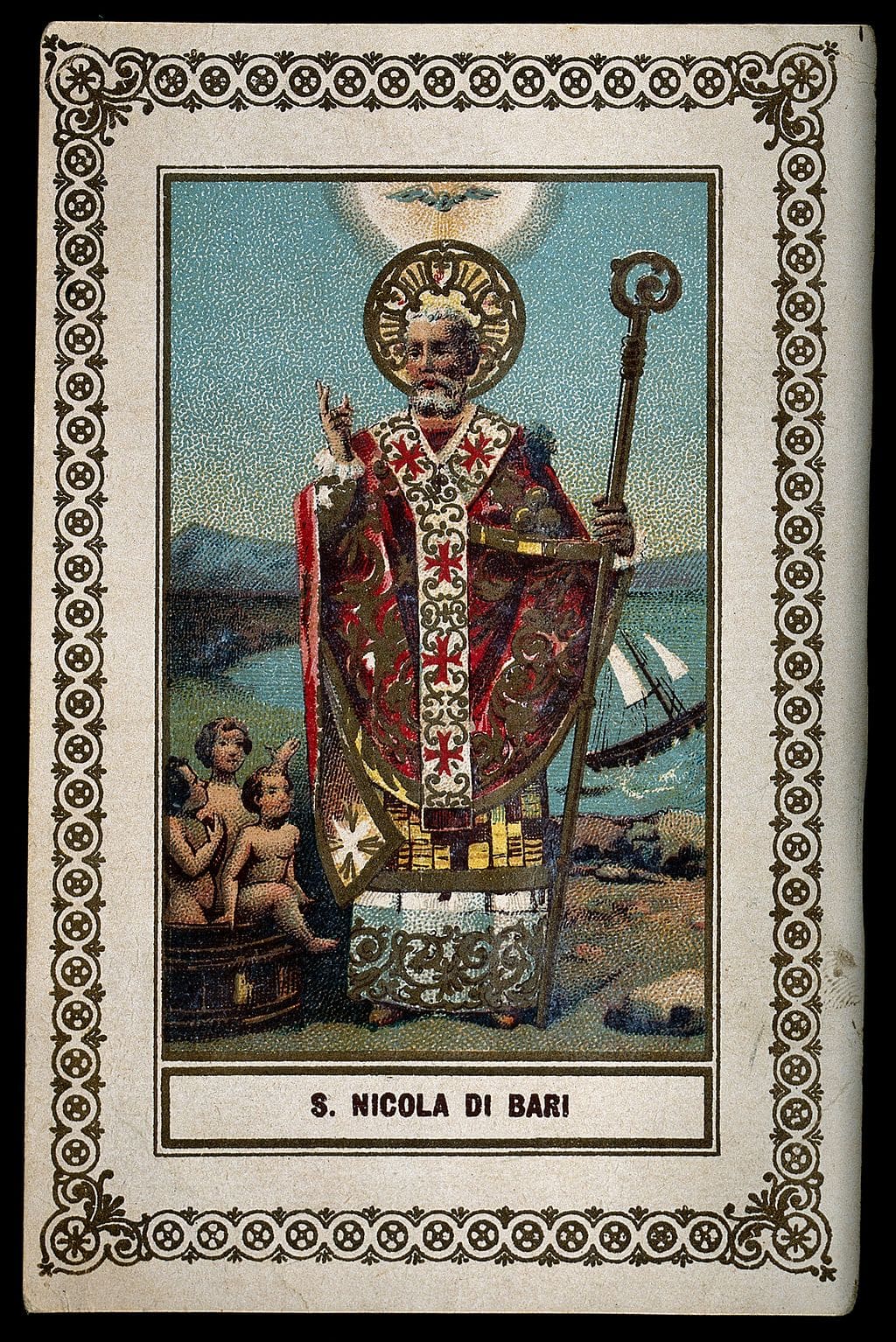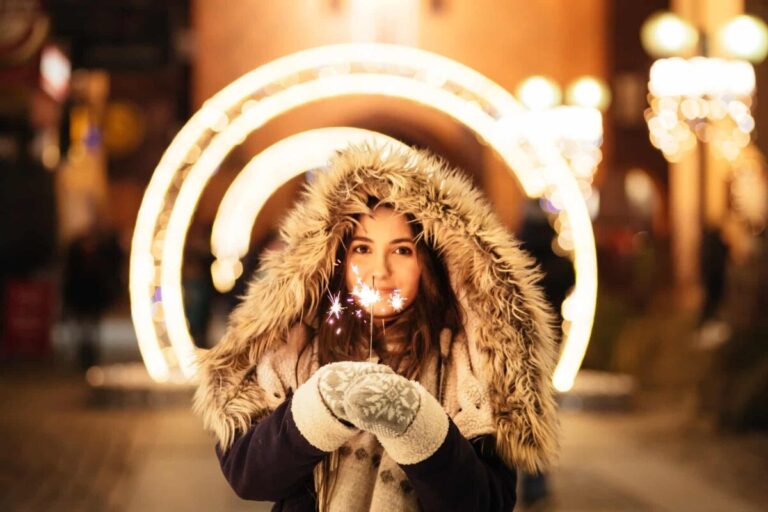In the Northern Hemisphere, winter falls quite late in the year, usually beginning on the Winter Solstice or around December 21st.
In November, December, and January people around the world celebrate many festivals. Some commemorate significant religious dates, while others are cultural, with roots in a country’s past.
Here at Remitly, we celebrate and honor our global customers’ many traditions at this time of year. Let’s look at some of the most widely celebrated winter holidays worldwide.
November Winter Holidays Around the World
In November, there are a few holidays—two of which are traditionally known as the festival of lights.
Diwali

Diwali, known as the Festival of Lights, is a five-day celebration of the triumph of light over dark or good over evil. It is observed primarily in India, Myanmar, Nepal, and Sri Lanka by those practicing Hinduism, Jainism, and Sikhism. The Hindu lunisolar month Kartika defines when the celebration begins and ends.
In India, Diwali is usually the biggest holiday of the year. People celebrate by lighting lamps or colorful lights and igniting fireworks.
Thanksgiving
Thanksgiving is a holiday primarily in Canada, the United States, Grenada, Saint Lucia, and Liberia. In Canada, it is on the second Monday in October, while in the United States, it is on the fourth Thursday of November.
This holiday originated as a fall harvest celebration. In the United States, the story goes that the colonists or Pilgrims and the Native Americans observed a joint fall feast at harvest time, a tradition that led to modern Thanksgiving.
The modern holiday comprises a feast shared by friends and family members. People usually eat a turkey, many side dishes, and desserts.

December Winter Holidays Around the World
December probably has more different winter holidays around the world than any other month. There is, of course, Christmas. People in over 160 countries worldwide enjoy the Christmas holidays with their loved ones.
Krampus Night

People in Germany and Eastern Europe observe Krampusnacht or Krampus Night on December 5th.
Krampus, or Christmas Devil, is typically depicted as a hairy, horned, devil-like creature with a pointed tongue and fangs. Some have described Krampus as a half-man (or half-demon) and half-goat.
Krampusnacht is the night before St. Nicholas Day, and the Krampus figure is meant to scare or punish the bad children, while St. Nicholas would reward the good children.
Recently, the holiday has grown to include adult revelries that involve dressing up as Krampus and parading or running through the streets.
Hanukkah

Hanukkah can fall in November or December, as it follows the Hebrew calendar. Also called the Festival of Lights, this eight-day Jewish festival is known for lighting a special candle holder called a menorah. People also give small gifts and spin a dreidel for a chance to win chocolate coins.
The word “Hanukkah” means “Dedication” in Hebrew. This festival is to commemorate the rededication of the Second Temple of Jerusalem. It is also spelled Chanukah and is sometimes called the Festival of Rededication.
Boxing Day

Boxing Day, December 26th, is a popular December holiday in the UK, Canada, Australia, and New Zealand.
Originally, this day was one in which gifts were given to people experiencing poverty, servants, or others of a lower social class. Some say that is the origin of the name—it was a day in which gifts were placed in boxes for this purpose.
In more modern times, however, Boxing Day has developed into a holiday associated with sports, shopping, and spending time with friends.
Outside the named countries above, a few areas, primarily several European countries, celebrate this day as a second Christmas.
Christmas Eve and Christmas Day

The History Channel tells us, “For two millennia, people around the world have been observing it with traditions and practices that are both religious and secular in nature.”
In Christian tradition, people commemorate the birth of Jesus Christ on Christmas Eve (December 24th) and Christmas Day (December 25th).
Christmas Eve festivities may include attending church services and exchanging gifts. In many countries, children await the arrival of Father Christmas, a mythic figure who leaves Christmas presents for good girls and boys.
Some countries have their own unique Christmas Eve traditions. For example, in Ukraine, people hold a feast called the Sviata Vecher or Holy Supper as soon as they spot the first evening star in the night sky.
On Christmas, people celebrate in different ways as well. Gift-giving may occur in the morning or afternoon. It’s customary to sing special Christmas songs called carols in many places.
While Christmas is a Christian holiday, it is also a cultural holiday globally, so many Christmas festivities, like decorating a Christmas tree, span both religious and secular aspects of the season. Many pagan traditions have been incorporated into modern Christmas observances to give secular people various ways to enjoy the festive Christmas season.
Kwanzaa

Kwanzaa is a more recent holiday. Maulana Karenga, professor and chair of Black Studies at California State University, was the first to create and observe this holiday in 1966.
Derived from ancient African harvest festivals, the holiday honors African-American culture and aims to bring the African-American community together.
Kwanzaa occurs from December 26th through January 1st. This winter holiday is mainly in the U.S. On the sixth day of Kwanzaa, people hold the Karamu feast. Kwanzaa is meant to honor family, community, and culture. It combines multiple historic harvest celebrations from African culture.
Kwanzaa has seven principles and symbols to follow, and some African Americans dress in traditional costumes during the festivities. To some people, Kwanzaa is an alternative to Christmas, but it does not have to be a spiritual holiday. Anyone of any faith can appreciate this cultural celebration.
Posadas

Las Posadas is a religious holiday observed primarily in Spain, Latin American countries such as Mexico, Guatemala, and Cuba, and some areas within the United States with large populations of people from these areas.
“Las Posadas” translates to English as “The Inns,” which references the inn from the Nativity in the Christian faith.
It is a nine-day celebration starting on December 16th and ending on December 24th. The nine days are thought to represent the nine months of Mary’s pregnancy, and the traditions associated with these days are meant to represent the hardships faced by Mary and Joseph while seeking shelter on their journey from Nazareth to Bethlehem.
St. Lucia Day

St. Lucia Day, also known as the terms Lussinatta, the Lussi Night, or Feast of Saint Lucy, is primarily celebrated in Sweden, Denmark, Finland, and some parts of Italy, Croatia, Hungary, and nearby areas.
It falls on December 13th yearly and honors its namesake, St. Lucia (or St. Lucy, Lucia of Syracuse, or Sankta Lucia).
In Scandinavia, St. Lucia Day marks the beginning of Christmas and is another festival of lights and feast day. St. Lucia was a Christian girl who was martyred for her religion.
Nowadays, young girls dress in white and wear a candle-lit wreath on their heads on St. Lucia Day. In many households, the person depicting St. Lucia will serve food.
St. Nicholas Day

St. Nicholas Day, or the feast day of Saint Nicholas, is a winter holiday mostly observed on December 5th or 6th, or the 19th, in Eastern Christian countries.
St. Nicholas was a Christian noted for generosity who inspired the legend of Santa Claus and Father Christmas. He sold off his possessions to give to those who were ill, in need, or otherwise suffering. As such, this holiday is generally honored by giving to others.
It is observed primarily in areas near its Dutch roots: the Netherlands (where St. Nicholas is known as Sinterklaas), Belgium, and Luxembourg.
That said, it is also recognized in other locations—many countries worldwide have a custom or observance to honor St. Nicholas. The details vary but often take the form of giving small gifts and food items.
The Twelve Days of Christmas

The Twelve Days of Christmas begin on Christmas Day and end on January 6th (which is Three Kings Day—see description below in January holidays). This time frame marks the time between the birth of Christ (Christmas Day) and the coming of the Magi (called Three Wise Men or Three Kings), which occurred 12 days later.
Winter Solstice

Winter Solstice is the longest night of the year, which occurs on or around December 21st and is a holiday in many countries.
For example, it is called Toji in Japan, where it is traditional to take a hot bath with citrus fruit. In China, it is called the Dongzhi Festival, where people eat tang yuan (湯圓, similar to mochi) with their family.
This time is also referred to as the pagan holiday Yule, which includes the Winter Solstice and the eleven days following. Many ancient Yule traditions have been incorporated into modern Christmas celebrations.
New Year’s Eve

New Year’s Eve, which, as the name implies, is the eve of the new year. It is the last calendar day of the year, December 31st. It is also called Old Year’s Day or Saint Sylvester’s Day.
In Japan, people also refer to New Year’s Eve as Ōmisoka. There, Japanese families gather together and visit shrines.
In Spain, it’s traditional to eat twelve grapes, one per chime of the clock at the countdown to midnight. It’s thought to bring good luck. Also, for good luck, many families in the southern United States eat black-eyed peas on New Year’s Eve.
And these are just a few of the various customs you’ll find on December 31st. One widespread celebration is welcoming the new year with fireworks displays.
January Winter Holidays Around the World
New Year’s Day

New Year’s Day is the first day of the year in the Gregorian and Julian calendars—January 1st. It is observed in cultures that use solar calendars with fixed dates for new years. (For cultures using a lunar calendar, the new year happens based on a day that will vary based on that year’s lunar schedule).
Billions of people worldwide welcome New Year’s Day on January 1st with fireworks, parties, and the creation of New Year’s resolutions as people plan for the year ahead.
Ganna (Genna)

As mentioned above, Christmas is most associated with December 25th, but that’s the date within the Gregorian calendar. In the Julian calendar, however, it falls on January 7th.
Orthodox Christian communities use the Julian calendar, such as those in Ethiopia, Egypt, Greece, and Russia. In this tradition, January 7th is the day for the religious observance of Christmas.
In Ethiopia, the holiday is called Ganna or Genna. It is observed with a 43-day fast before the holiday itself.
On Ganna, men play a hockey-like game by the same name as a tradition. Pilgrims also make their way to the ancient rock-cut churches of the Lalibela region in northern Ethiopia.
Makar Sankranti

Hindus across India observe a festival to mark the coming of spring, Makar Sankranti, on January 14th.
There are monthly holidays in India to commemorate the sun’s movement from constellation to constellation. This holiday recognizes the transition into Capricorn and honors Surya, the sun god. Communities celebrate differently depending on their location.
Three Kings Day

Three Kings Day, also known as the Epiphany or Theophany, is the day the Three Kings (the Three Wise Men) first saw the baby Jesus on January 6th.
It is at the end of the Twelve Days of Christmas. There are some variations of this holiday in other areas around the world. In Spanish-speaking Catholic countries, it’s often a day for gift-giving and eating delicious king cake.
Frequently Asked Questions (FAQ’s)
Where is Christmas celebrated the longest?
The Philippines is famous for having the longest Christmas season in the world. People begin to celebrate Christmas as early as September by decorating with bright lights and lanterns as soon as the weather cools. The holiday season continues throughout the fall. In December, formal celebrations start and continue through the first week of January, with Epiphany on January 6th. The season wraps up on the 9th.
What are the most popular December and January winter holidays besides Christmas?
People in Germany and Eastern Europe observe Krampusnacht or Krampus Night on December 5th. Krampusnacht is the night before St. Nicholas Day.
Hanukkah can fall in November or December, as it follows the Hebrew calendar. Boxing Day, December 26th, is a popular December holiday in the UK, Canada, Australia, and New Zealand. Kwanzaa is a more recent holiday. It occurs mainly in America from December 26th through January 1st.
Las Posadas is observed primarily in Spain, parts of the Southern Hemisphere, and other Latin American countries. It often includes fun activities like breaking a piñata filled with treats
St. Lucia Day is celebrated in Sweden, Denmark, Finland, and some parts of Italy, Croatia, and Hungary.
There are plenty of holidays celebrated in January too, such as New Year’s Day, Ganna/Genna (Ethiopia), Makar Sankranti (India), and Three King’s Day.
When is the first day of winter?
In the Northern Hemisphere, winter falls quite late in the year, usually beginning on the Winter Solstice or around December 21st. The winter solstice marks the exact moment when half of Earth is tilted the farthest away from the sun and is the shortest day and longest night of the year. However, the Southern Hemisphere’s winter solstice occurs in June.
What are some popular winter holiday destinations?
Popular winter holiday destinations include places with warm weather, ski resorts, and places with indoor activities. Within America, some popular places to visit are Palm Springs, Lake Tahoe, New York City, and San Diego. Outside of the U.S., you may find many people in Chile, Paris, Italy, Japan, Iceland, Scotland, and Finland. However, any country in the world will have its own unique customs and traditions during the winter.

